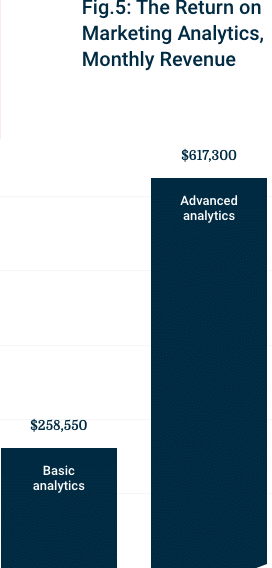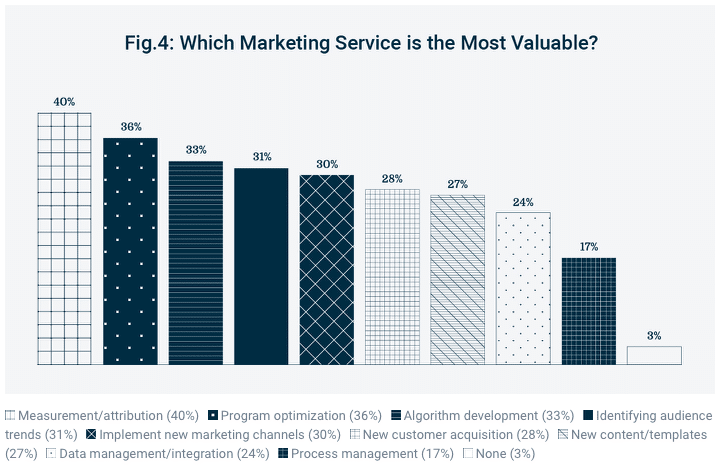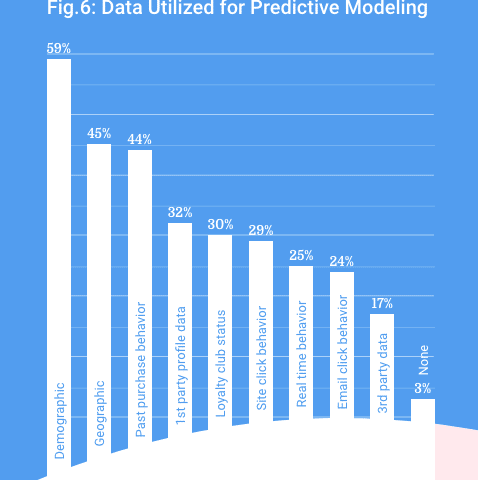When it comes to your marketing efforts, you likely pay a substantial amount of attention to analytics. However, your view may be limited. You may be looking at the past without thinking carefully about how to model the future.
And despite what marketers would like to believe, the past is not necessarily a good way to model the future. That’s why whenever you see a financial-services company touting its ability to turn a small investment into major wealth, there’s usually a fine-print reminder: “Past performance is not an indicator of future performance.”
Naturally, that doesn’t stop us from using performance to predict behavior through propensity and predictive modeling. But, how we use performance could change as predictive metrics begin to prove their worth, thanks largely to the mastery of artificial intelligence and machine learning.
Today, I’m sharing why marketers need to consider future-oriented analytics as they look to the future.
Marketers need the full picture
Marketers are campaign-oriented. You probably focus heavily on measuring the success of each campaign as a unique entity, often over and above measuring the customer lifetime value (CLV). This happens for various reasons. Mainly, campaign metrics are easier to measure than individual CLV.
While campaign-level metrics are important, of course, concentrating only on one campaign at a time without looking at trends in factors such as engagement over time means you miss out on the larger picture – failing to track unforeseen gains or, more dangerously, missing warning signals.
Added to this, today’s method of calculating CLV isn’t overly accurate. It uses known historical data and bases it solely upon past transactions for a specific customer or group. This provides insight into only what has already occurred. As such, it sheds little insight into the potential value of new subscribers and customers.
Future-oriented analytics boosts CLV
Because of this tendency toward inaccuracy, many advanced marketers discount the value of using CLV to guide marketing strategy and tactical approaches. This makes them optimize for short-term gains at the expense of long-term gains. I argue, instead, that we need a better way to calculate CLV that goes beyond using the past to predict the future.
This led me to predict that 2018 would become the year marketers begin clamoring for this more accurate means of calculating CLV. Not that we’ll have full acceptance of the concept and mastery of it by Dec. 31. But, an increasingly sophisticated population of marketing teams will come to see the value and begin working toward it.
What makes me feel so optimistic that we will be able to improve on predictive marketing metrics such as calculating the CLV is the growing understanding and adoption of machine learning to predict individual and group customer lifetime value. In other words, the growth of Predictive CLV.
Effective marketing must look forward
I borrowed this definition from SAS for its clarity and application in the marketing analytics world:
“Predictive analytics is the use of data, statistical algorithms and machine learning techniques to identify the likelihood of future outcomes based on historical data. The goal is to go beyond knowing what has happened to providing a best assessment of what will happen in the future.”
It has multiple applications outside the marketing world – “Hey, Siri!” – but it has special pride of place for marketers, especially those in retail and other ecommerce operations:
- Reduce customer churn by picking up signals of disaffection that current analytics overlook.
- Anticipate changing behavior rather than doing damage control such as relying on re-engagement or retargeting.
- Increase revenue through reducing attrition and targeting messaging to encourage more repeat spending and higher basket totals.
- Increase customer lifetime value.
Research backs predictive over historical metrics
The Relevancy Group has done extensive research into future-oriented analytics and its role in advanced marketing, as you’ll see in the three charts below.
In the first chart, the research shows the benefits for using advanced analytics such as predictive CLV over basic analytics such as historical CLV.

Predictive CLV measures types of current actionable insights that help marketers make better informed, data-backed decisions that contribute to increased revenue:
- Which group of subscribers and their attributes will be the most profitable over a specific period.
- Which acquisition channel/tactic delivers the customers with the highest CLV
- Which customer attributes assist in driving increased lifetime value.
What do marketers want?
The second chart reveals that marketers value helpful and insightful analytical services.

Wrap up
We’re not there yet, as you can see in the third chart. Two factors could accelerate this trend: greater familiarity with and applications of machine learning, which drive predictive analytics; and the inclusion of data scientists as key members of the marketing team.

Source: The Relevancy Group Executive Survey n=431 1/17, US Only.
I look forward to seeing marketers turn toward predictive analytics to power CLV and provide other helpful insights. This will happen as more marketers become aware of the benefits of using predictive marketing metrics to help them provide both more value to the customer by gaining valuable insights and in turn benefiting from the use of these predictive marketing metrics.





